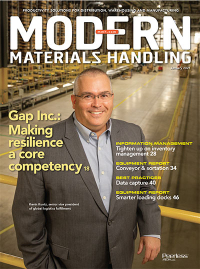Don’t underestimate the power of the tape head
Packages can arrive in less than great shape if the taping process was botched in any of several ways. Here are some tips on what to look for in a tape head that can consistently do the job.
We’ve all been there. That eagerly awaited package has arrived and the only thing separating you from what’s inside is the tape applied at the distribution center. But the tape is still doing its job, maybe a little too well at this point in the journey.
While you may be a bit frustrated, the shipping department back at the DC is not. As it turns out, they’re kind of proud that the taping step went so well and the package arrived in one, nicely rectangular piece. But it’s not a given that shipping would work out that way. We’ve all received those packages, too.
Not everyone realizes that the tape head at the end of the shipping line has quite a bit to say about how any package holds together in transit. The tape head also has an impact on the efficiency of the shipping department, explains Yukie Sezto, product manager at Dekka. He offers to explain how all this works.
Let’s start in the shipping department. Quite simply, the tape head can be a bottleneck. It might be unreliable. That could include troubles applying the tape. Breaks in the tape could occur. Or, the head didn’t cut the tape correctly. Possibly, the head didn’t wipe the tape onto the package securely. Those are all common problems before a package ever gets out the door, says Sezto.
The trick is to avoid all those troubles as the tape head secures 30 or 40 packages a minute. That’s what the product engineers at Dekka focused on when they developed the SE V3 tape head. In fact, all the potential shortcomings just mentioned were key areas they improved in this model.
In particular, the cutting performance improved 20% with a stronger, faster cut. And that’s especially important with small cases, slightly under-filled packages and softer recycled corrugate, says Sezto.
He’s also quick to point out that this tape head has the longest wipe down available. Perform this part of the taping operation poorly, and it could compromise the security of the package in transit.
“Extended wipe down on the sides ensures the flaps are held down against the case, keeping the product secure during shipment,” adds Sezto. Furthermore, the polyurethane wipe down rollers require less maintenance than separate roller sleeves, reducing costs.
A low cost of ownership is something else the SE V3 has going for it. This matters over the typical 10-year lifespan of the tape head. Its simple, rugged design helps simplify any needed repairs. “Total cost of ownership is so much more important than initial cost of a tape head,” adds Sezto.

Article Topics
Packaging News & Resources
Registration open for Pack Expo International 2024 Pack Expo East has largest show to date Optimize Parcel Packing to Reduce Costs CMC Packaging Automation North America unveils Tech Center in Atlanta PACK EXPO East brings latest packaging technologies to Philadelphia Loftware’s cloud-based labeling solutions take center stage Flexcon unveils its innovative bin solutions More PackagingLatest in Materials Handling
April manufacturing output recedes after growing in March Carolina Handling celebrates anniversary with 58 for 58 giveaway Q1 sees a solid finish with strong U.S.-bound import growth, notes S&P Global Market Intelligence AutoStore to launch U.S. headquarters in greater Boston region Trew expanding manufacturing and development campus in southwest Ohio IFR: Robot installations by U.S. manufacturing companies up 12 percent last year Geek+ and System Teknik deploy PopPick solution for pharmacy group Med24.dk More Materials HandlingAbout the Author
Subscribe to Materials Handling Magazine

Find out what the world's most innovative companies are doing to improve productivity in their plants and distribution centers.
Start your FREE subscription today.
April 2024 Modern Materials Handling

Latest Resources












